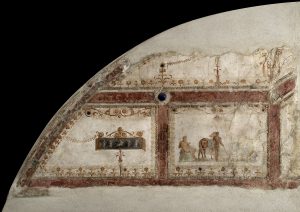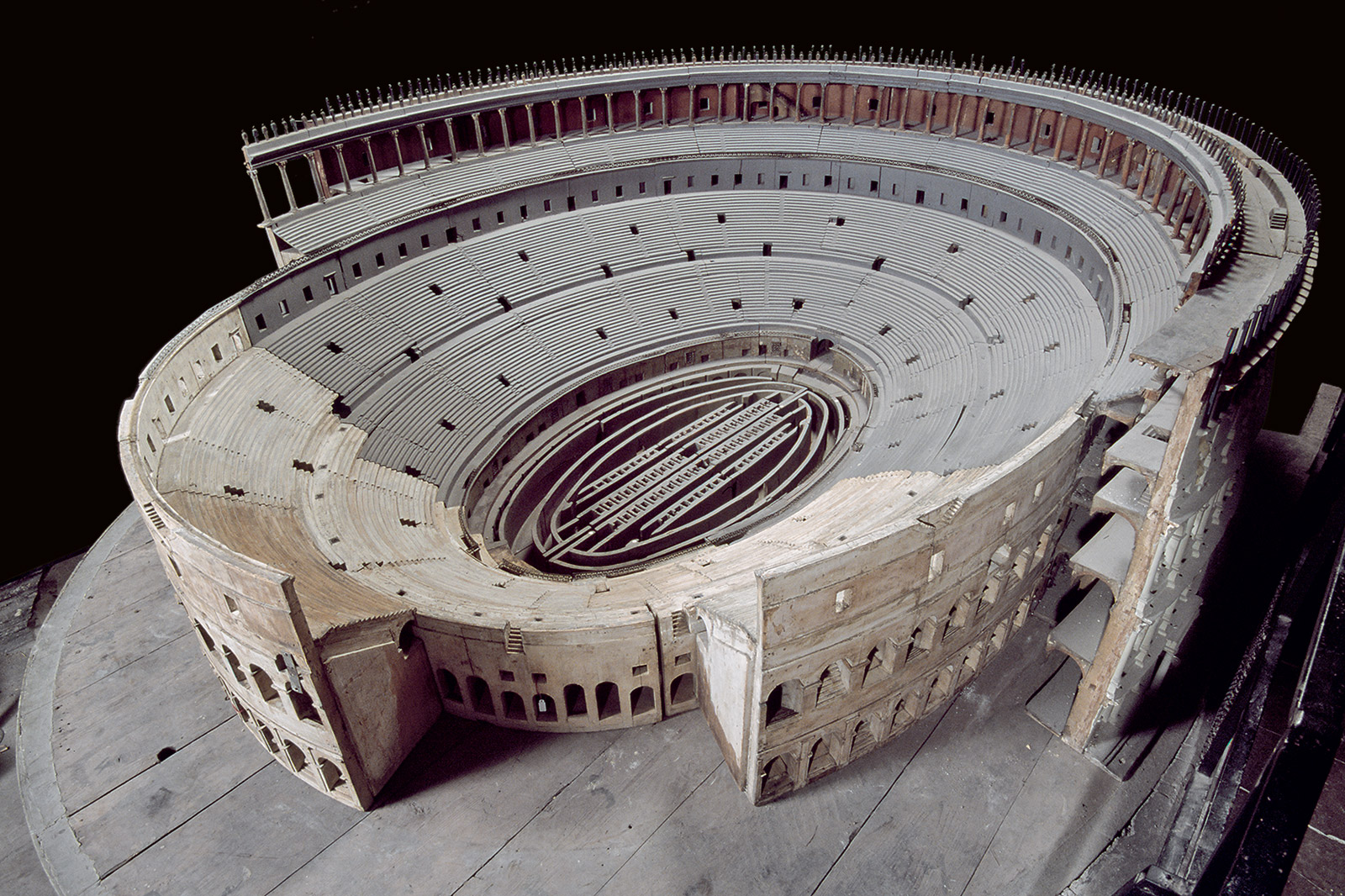Carlo Lucangeli’s wooden model of the Colosseum
Between 1790 and 1812 the architect and scenographer Carlo Lucangeli created the scale model (1:65) of the Flavian Amphiteater, on display in the Colosseum Museum on the monument’s 2nd level. Comprised of 47 distinct sections, assembled in 5 concentric bands, the model is the result of detailed studies of the monument’s architecture and of the first investigations conducted in 1795 beneath the arena floor. Poplar, beech, elm, lead and bone were used to recreate the Colosseum’s various features in great detail, and the tenuous colors of oil paint were used to give the travertine its characteristic bone white hue. Lucangeli, who died in 1812, was not able to complete the model, and so it was finished by his brother-in-law Paolo Dalbono. It was in fact Dalbono who added, among other things, the statues on the façade, the hypogea and the velarium (now lost). Despite its small size, this model has helped provide a clear idea of the complexity and accuracy of the monument’s architecture, combining the appeal of scenic design with a rigorous attention to detail and thus become source of inspiration and object of study for the architects of its time.




